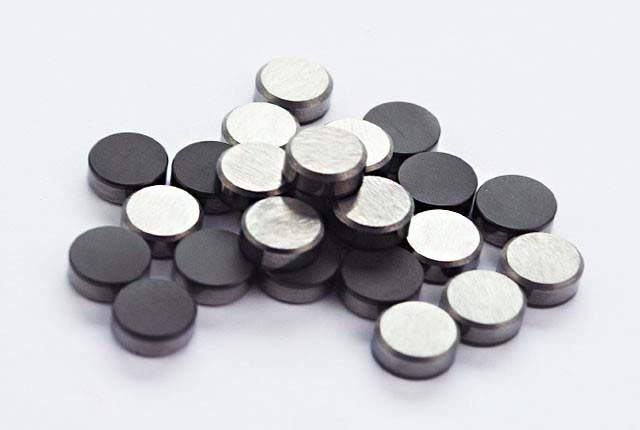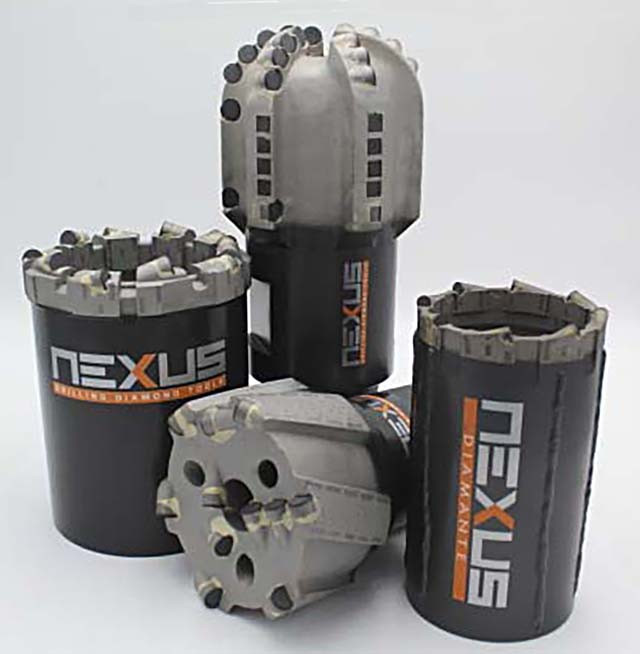PCD
CHARACTERISTICS OF PCD BIT
The tools cutting action occurs by cleavage. The PCD cutting part (polycristalline diamond) consists of cylinders of different sizes and composed of a PCD layer and a hard metal support. These inserts are firmly brazed to a support made of tungsten powders and a copper-based binder in special niches situated on the cutting surface of the tool.

During the drilling operations, each PCD penetrates the material to be drilled and a certain amount of material is removed by the rotary effect. This category of products differs in terms of shape and size of the PCD. This technology is applicable for drilling materials with variable hardness from 20 to 150 MPa. Larger PCD are more protruding and can remove more material for each revolution, but large PCDs cannot penetrate hard materials unless they are subjected to high pressures. To better adapt to the variability of the hardness of the rocks, tools with PCDs of different sizes are available. In general, hard materials will be worked with small PCDs and softer materials with larger PCDs. NEXUS produces tools with cylindrical PCD Ø13.44; 10; 8 and 6 mm. Unfortunately it is not enough to identify the type of rock to be drilled to define the most suitable dimension since in the making of a hole there are multiple variables having a decisive influence on the cutting effectiveness. The depth and direction of the drilling, the fracturing level of the rock, the variability of materials within the same hole, the characteristics of the probe (number of revolutions, torque, thrust on the tool), have a decisive influence on the choice related to the tool's more suitable size. Therefore all these variables must be carefully evaluated before making a choice. In addition to the standard range of shapes and sizes of PCD NEXUS is producing tools on the customer's request. These tools have to work using water as a drilling fluid for cooling and debris removal.

